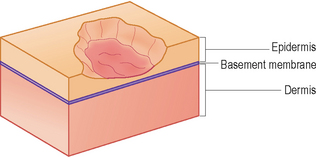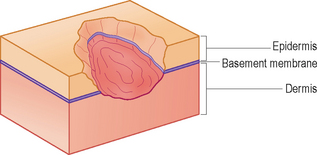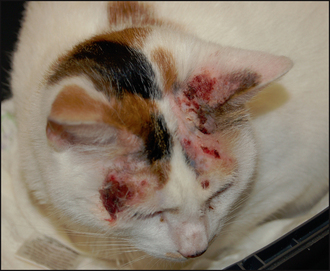32 Introduction to ulcerative and erosive dermatoses
EROSIONS AND ULCERS
An erosion is a lesion involving loss of some or all of the layers of the epidermis, but without disruption of the basement membrane (Fig. 32.1). As a rule, these lesions do not bleed easily.
An ulcer is a lesion involving complete loss of the epidermis and also involving disruption of the basement membrane, leading to exposure of the underlying dermis (Fig. 32.2). Ulcers do tend to bleed easily. Ulcerated lesions also tend to crust due to the accumulation of blood and/or exudate on the skin surface. Clinically, it can sometimes be difficult to differentiate between deeper erosions and shallow ulcers. Features that may be helpful in determining the cause of ulcers and that should be considered when describing them include the site of the ulcer, the appearance of the border and base, any discharge and the nature of the surrounding skin.
AETIOLOGY
Extrinsic trauma and intrinsic disorders can both result in cutaneous erosions and ulcers.
Extrinsic trauma
The most common cause of erosive and ulcerative skin disease is from self-trauma due to an underlying pruritic skin disorder (Fig. 32.3). The distribution and appearance of the lesions in these cases will reflect the nature of the insult. Lesions in cases of self-trauma frequently have a linear distribution. Other external insults such as chemical or thermal burns will have varying morphologies depending on the agent involved.
Stay updated, free articles. Join our Telegram channel

Full access? Get Clinical Tree





